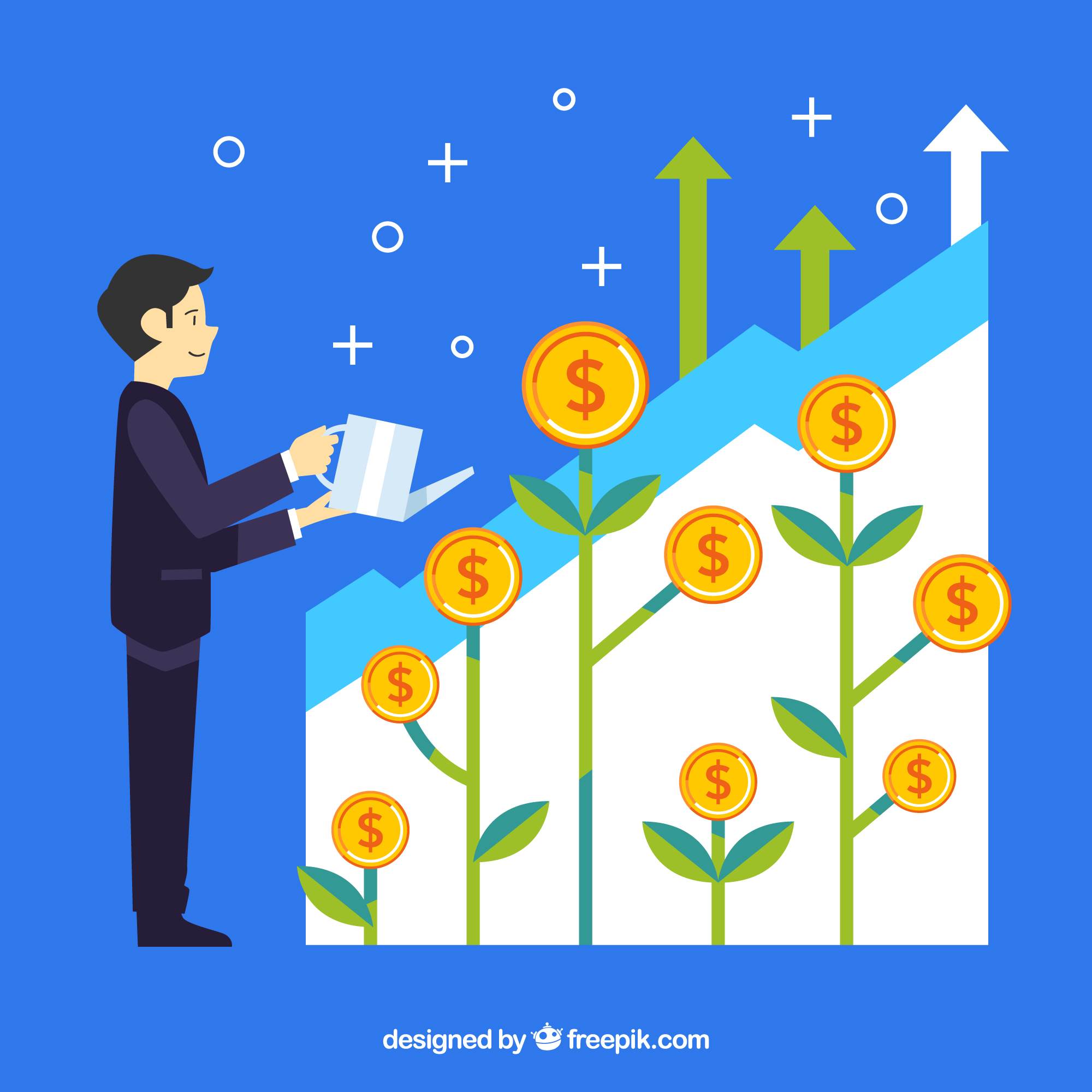TradingKey - Have you chosen the right investment strategy for yourself? Do you know what your risk tolerance type is as an investor?
Finding your position in investing is crucial; it's important to select an investment strategy that aligns with your risk tolerance and investment goals.
Next, we will help you understand what value investing and growth investing are, so you can learn their characteristics and make a more informed choice!
What Is the Definition of Value Investing?
Consider this question: In the stock market, why do some companies consistently generate profits while their stock prices remain lukewarm?
This leads us to discuss the core logic behind value investing.
So, what exactly is value investing?
It is an investment strategy founded by Benjamin Graham that involves deeply analyzing a company’s intrinsic value to identify stocks whose market prices are below their true economic value.
Although stock prices may fluctuate significantly in the short term due to various factors such as market sentiment and macroeconomic conditions, the core principle remains: over the long term, prices will inevitably revert to their true value!
This concept can be likened to treasure hunting in an antique store. Imagine you're browsing through one and come across a blue-and-white porcelain vase priced like ordinary pottery. It's like striking gold when you realize you've found it—value investing allows you to discover these types of “treasure companies” that are undervalued by the market.

(Source: Freepik)
What Are the Core Characteristics of Value Investing?
Valuation Metrics
How can one assess a company's intrinsic value?
Let's take a look at several valuation metrics that were detailed in the previous article.
The Price-to-Earnings (PE) ratio is one of the most well-known metrics. Generally speaking, a low PE ratio indicates that the stock price is relatively low while the company's profitability is strong, suggesting higher investment value.
Another important metric is the Price-to-Book (PB) ratio. A low PB ratio typically indicates good asset quality, meaning that the stock price is relatively low and has a certain margin of safety.
Additionally, dividend yield is also a key focus for value investors.
A high dividend yield signifies that a company can provide stable cash returns to shareholders, reflecting its strong profitability and sound financial condition.
Margin of Safety
The margin of safety is one of the core concepts in value investing. Warren Buffett famously stated, "The margin of safety is the foundation of successful investing."
In simple terms, margin of safety refers to the difference between a stock's intrinsic value and its market price.
For example, when you drive, you need to keep a safe distance; this "safe distance" corresponds to your "margin of safety" in investing.
Buying stocks should be akin to purchasing discounted goods; if an item was originally priced at 100 and drops to 70 before you buy it, this $30 difference represents the "margin of safety," which helps you manage two types of risks:
Value Change Risk: Suppose you buy a company priced at 70 with an estimated value of 100. If later it turns out to be only worth 80, you still have a profit of 10.
Market Volatility Risk: Even if the company's intrinsic value remains unchanged, market sentiment could cause its stock price to fall to $60. As long as you hold on through market downturns until recovery arrives, you'll still make money.
Investment Horizon
Value investing typically represents a long-term investment strategy.
Value investing is like planting a tree; you must give the sapling time to grow.
Why hold investments for the long term? Take Buffett’s experience with Wells Fargo stock as an example:
In 1990, amid the U.S. Savings and Loan Crisis, Wells Fargo experienced a sharp decline in its stock price, resulting in its P/E ratio falling to 6 times earnings. After research revealed that there was no fundamental issue with their mortgage business—only short-term panic leading to undervaluation—Buffett decided to buy shares and held them for over 30 years.
During that period, he endured both the dot-com bubble and the 2008 financial crisis but never sold his shares. What was his outcome? An initial investment of 1 has now grown into 4.
Long-term investing not only allows investors to avoid disruptions caused by short-term market volatility but also enables them to fully leverage compound growth, achieving steady asset appreciation over time.

(Source: Freepik)
When Is Value Investing Most Attractive?
Opportunities for Bargain Hunting Arise When Others Panic
Have you ever experienced stocking up during a sale? Value investing is akin to shopping during a market clearance—when the overall market's PE ratio exceeds 25, and economic news is filled with bad tidings (such as the 2008 financial crisis or the pandemic-induced plunge in 2020), that’s the best time for you to search for undervalued stocks.
The logic is simple: when the market is overvalued, good companies’ stock prices may be driven through the roof. In contrast, during a bear market or economic recession, panic can cause high-quality companies’ stock prices to plummet.
Where Is the Resilience Advantage?
For instance, if a leading consumer company has a PE ratio of only 10, even if the market falls by another 20%, its dividend yield can support its stock price; meanwhile, overvalued growth stocks might drop by over 50%.
During the U.S. stock bear market in 2022, value stock indices fell by only 15%, while growth stock indices plummeted by 30%.
What Is Growth Investing?
This raises another question: why do some companies that aren't currently making much profit see their stock prices soar more than established firms?
That’s the allure of growth investing—it doesn’t focus on what a company "is" right now but rather on what it "could become" in the future.
Investors aim to identify companies expected to achieve rapid growth in the future. Even if these companies may not currently show strong profitability, as long as they possess unique technologies, innovative business models, or vast market potential, they could be seen as stocks with great potential in their eyes.
.jpg)
(Source: Freepik)
What Are the Core Characteristics of Growth Investing?
Growth Metrics
Like value investing, growth investing also has certain metrics that can be referenced.
Revenue growth rate and earnings growth rate are key indicators to measure whether a company has growth potential.
The revenue growth rate reflects the speed at which a company's business is expanding; a higher revenue growth rate indicates that the company's products or services are gaining greater recognition in the market, leading to an expanding market share.
The earnings growth rate is even more critical as it demonstrates that a company is effectively controlling costs while increasing revenue and achieving rapid profit growth.
If a company can maintain an earnings growth rate that exceeds its revenue growth rate while boosting revenues, it suggests that its operational efficiency is improving and profitability is strengthening.
In addition to these two main metrics, gross margin is also an important reference point. If a company's gross margin continues to decline, even if revenue is growing quickly, one should be cautious of uncontrolled costs.
Industry Selection
Growth investing typically emphasizes burgeoning industries and sectors that are leading technological advancements.
Industries like artificial intelligence, renewable energy, and biomedicine are currently in rapid development stages and possess enormous growth potential.
Hot sectors typically share three characteristics:
Technological disruption phase
Policy dividend phase
Demand explosion phase
For example, in 2015, within the AI industry, when Google launched AlphaGo, who would have predicted that today, AI chip company Nvidia would surpass a trillion-dollar market capitalization? Technological breakthroughs create opportunities for "zero to one" transformations.
Risk and Return Characteristics
Growth investing exhibits a typical high-risk, high-reward profile.
The future growth of growth-oriented companies is primarily based on expectations, which carry significant uncertainty.
On one hand, these companies may achieve better-than-expected growth due to technological breakthroughs or explosive market demand, resulting in returns for investors that are multiples or even tens of times their initial investment.
For example, those who bought Tencent in 2010 saw their investments grow fiftyfold over ten years as WeChat disrupted social networking and transformed gaming and advertising into cash cows.
On the other hand, if a company’s development falls short of expectations—due to factors like failed technology development, intense market competition leading to decreased market share, or changes in regulations—the stock price could decline sharply.
Thus, growth investing requires investors to have a strong ability to bear risks and an accurate capacity for assessing future trends.
When Is Growth Investing Most Suitable?
When opportunities arise, don't miss out; as the saying goes, "Even a pig can fly when it’s facing the wind."
Growth investing is about finding these "windfall" moments—when certain signals appear, you can decisively enter the market:
Economic recovery + emergence of new industries: In 2023, the demand for AI computing power surged, causing Nvidia's stock price to double within a year.
Policy dividend periods: After China's "carbon neutrality" policy was implemented, solar installation capacity grew by 30% annually, resulting in Longi Green Energy's stock rising fivefold over three years.
Risk Tolerance: Are you an "investment timid" type or an "adventurer"?
Why is it that when the same stock declines by 10%, some people lose sleep over it while others see it as a bargain opportunity? This highlights the differences in risk tolerance.

(Source: Freepik)
Five Types of Risk Personalities: Which One Are You?
- Conservative Type (Capital is "Life's Necessity")
Like someone who locks their money in a safe, you prioritize "not losing money" and are unwilling to invest in any product labeled as having "risk."
- Cautious Type
You can accept minor fluctuations, but anything that significantly impacts your capital is unacceptable.
- Balanced Type (Seeking Safety and Profit)
You are like a tightrope walker, striving to find the balance between risk and reward. You invest equally in stocks and bonds.
- Aggressive Type
You believe in "risk for reward" and can tolerate a short-term loss of 20% in your account.
- Speculative Type
You are willing to take on substantial risks for high returns. For instance, you might invest 10% of your funds into an AI concept stock, betting that it will multiply tenfold within three years.
How Can You Determine Which Personality Fits You? Consider the Following Questions:
1. If your account suddenly lost 20%, what would you do?
Conservative Type: Sell immediately to stop losses, never touching stocks again.
Speculative Type: After analysis, if you feel the rationale hasn't changed, you would instead increase your position.
2. How stable is your income?
Stable high salary → More inclined to take risks.
Freelancer or entrepreneur → Lean more towards being conservative.
3. Do you lose sleep over investments at night?
Yes → Avoid high-risk products.
No → Try more aggressive investments.
By assessing your own risk tolerance and investment goals, you can choose an investment strategy that suits you best.


